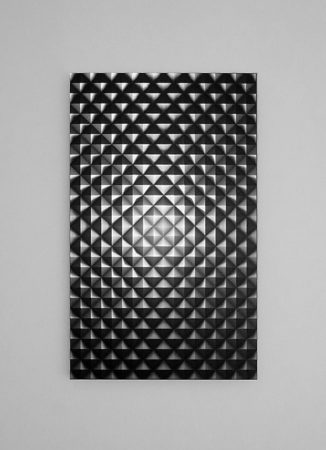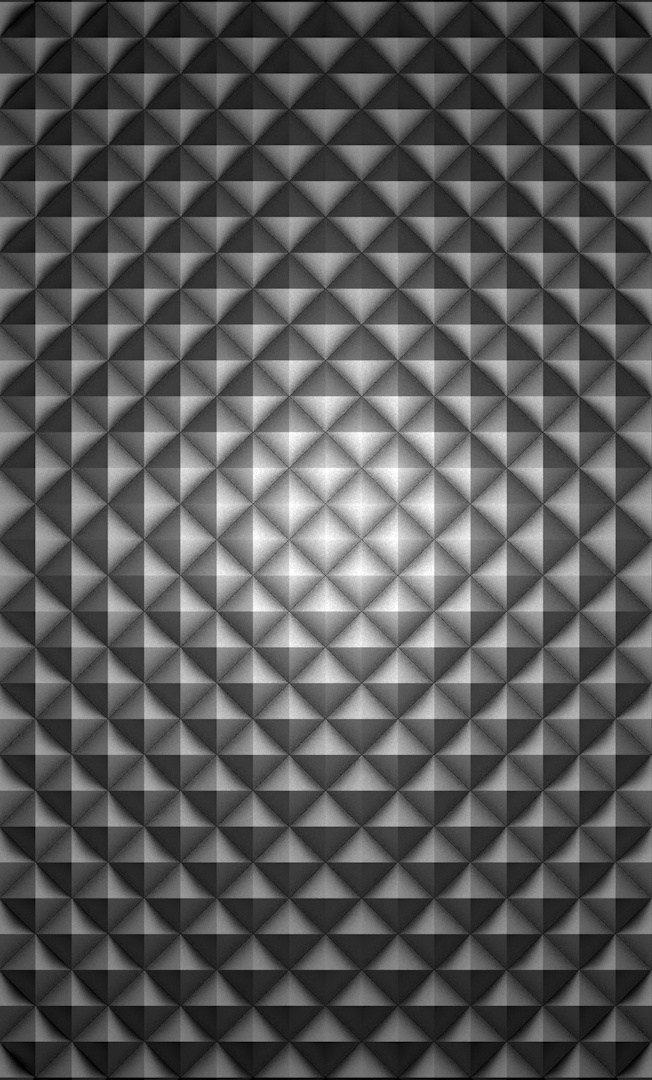MOTIF 232 OCTAÈDRES
Print on dibond, video projection. 2016
custom mapping software
100 x 79 cm
edition 1/6
This series consists of regular, repetitive patterns formed by simple geometric shapes, with a soft shading to highlight the structural qualities of the compositions.
A layer of light is applied to the surface of the print, creating shadows and bringing depth to the flat print, extruding volumes, turning negative shapes into three dimensional objects. The motif series are the continuation of Joanie’ light canvas series, focusing mostly on optical illusions and showing how the audience perception can be deceived, which questions the very nature of perception and the notion of reality.
These works are inspired by the body of work of Victor Vasarely and the research on OP art from the GRAV.
About the ‘Light canvas’ series:
In the light canvases’ body of work, precise light beams pass over an array of rectangular structures printed on a flat surface. Darkness and illumination alternates to create an immersive three-dimensional experience transforming our sense of space. As Edward Rothstein wrote in the NY Times in 2011 in an article called “When Pictures Leap to Other Screens”, there really is a thrill to these experiments. You are amazed at the technology while being entranced by the effects. Moving images, though the familiar substance of experience, have only been created in recent centuries. They seem more real than still images, but are more artificial in themselves, even unsettling; they resemble experience but seem divorced from it, even supplanting it. And while a still image proclaims permanence, a moving image is evanescent. Whatever the medium, it also has unusual power to affect perceptions and inspire amazement”.
In his light sculptures, Lemercier brings a physical aspect to his three-dimensional sculpture-screens. He approaches sculpture as a volume in continuous transformation rather than a static mass, thereby making reality strangely unreal. For this purpose two layers are overlapped. On the one hand the physical layer- the object itself- controls the real space and shapes the volumetric base that serves as a support for the second level, a virtual projected layer of light that allows to control transformation and sequentiality.



